Eco-friendly fashion materials for 2025 are all about style and sustainability! Think vibrant organic cotton tees (hello, comfort!) and trendy hemp dresses that make you feel good inside and out. Upcycled fabrics, like chic pieces from recycled PET bottles, are stealing the show. Plus, how cool are lab-grown silk and mycelium leather?! If you wanna look snazzy while saving the planet (and trust me—you do!), stick around for more amazing eco-style perspectives and outfit inspo!
Quick Takeaways
- Organic fibers like cotton and hemp will remain key materials favored for their comfort and environmental benefits in sustainable fashion.
- Innovations in recycled fabrics, such as those made from PET, will gain traction, transforming waste into high-quality fashion items.
- Circular business models will grow, with brands focusing on secondhand shopping, rental services, and on-demand production to minimize waste.
- Advances in technology, including blockchain and AI, will enhance the ethical sourcing and design processes for eco-friendly materials.
- The development of bioengineered textiles, such as mycelium leather and algae-based fabrics, will redefine sustainable materials in the fashion industry.
Embracing Organic Fibers in Sustainable Fashion
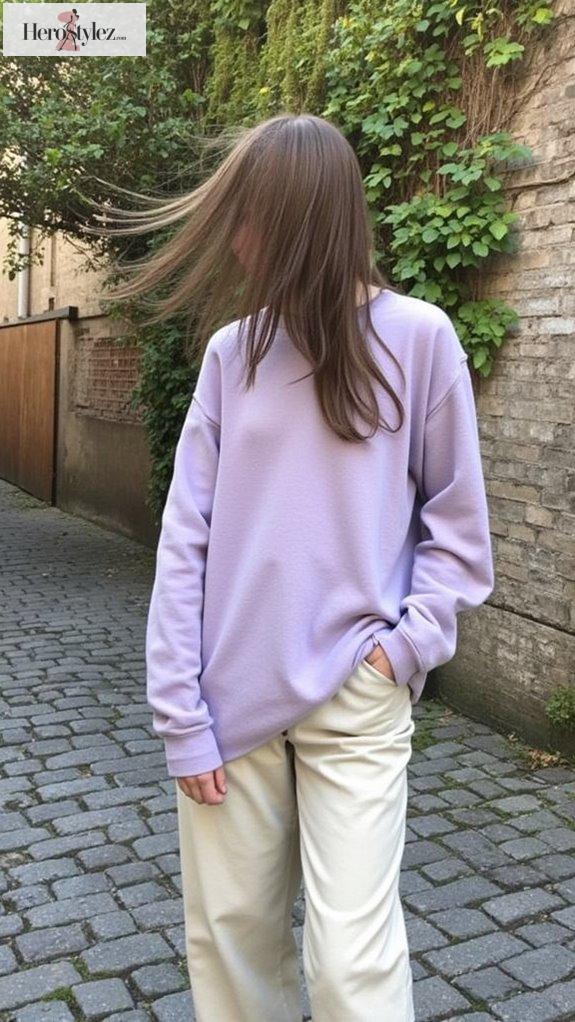
Ready to level up your wardrobe while saving the planet?
Think organic fibers! We’re talking organic cotton and hemp, the stars of the sustainable fashion scene. They not only feel amazing against your skin but also lessen your carbon footprint. Natural fibers like cotton and hemp are key market drivers, with the global natural fiber market projected to grow from $69.2 billion in 2024 to $94.6 billion by 2030. As more brands embrace eco-friendly styles, consumers are finding numerous options that align with their values.
Seriously, 79% of Gen Z and 73% of millennials are all about that eco-friendly life!
Imagine rocking a soft organic cotton tee in a perfect pastel—adorable, right? And the health perks? Bye-bye, skin irritation!
At Hero Stylez, we believe sustainable choices should be stylish too!
Let’s embrace organic fibers like it’s our new favorite trend (because it is!).
Innovations in Recycled and Biodegradable Materials
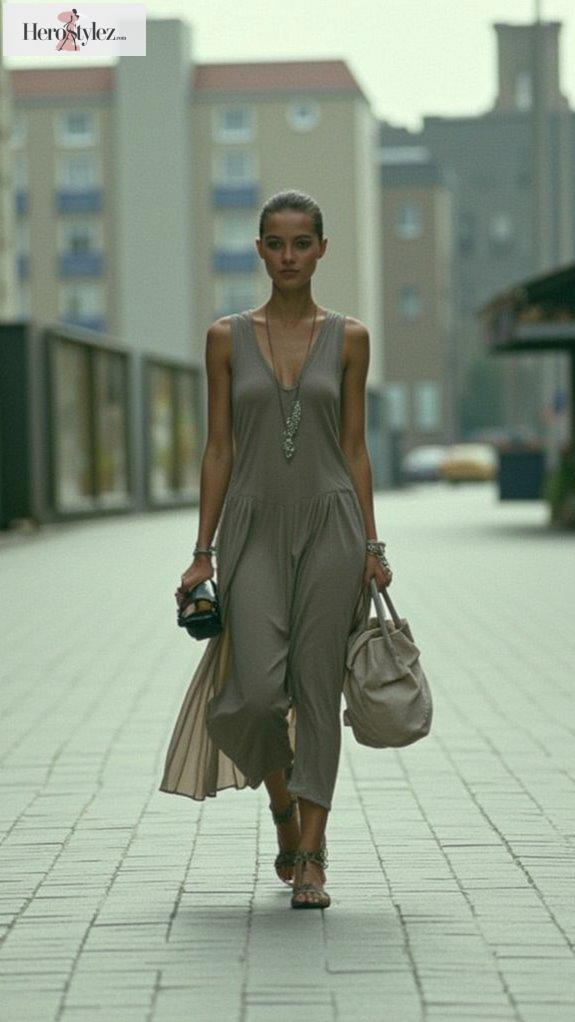
So, are you ready to rock those killer recycled fabrics like a boss?
Imagine strutting your stuff in stylish threads made from PET bottles—talk about turning trash into treasure!
Strut your stuff in trendy threads crafted from recycled PET bottles—it’s all about turning trash into fashion treasures!
With cutting-edge recycling tech, companies are breaking down old garments into high-quality fibers, giving waste a chic second life.
Then there’s mycelium leather and lab-grown silk—who knew fungi and yeast could be so fabulous?
Plus, think about coastal waste fabrics like Seawool®—who wouldn’t want to sport eco-friendly pieces that help cleanse the oceans?
As brands continue to innovate, they are increasingly incorporating sustainable materials that further enhance their eco-conscious offerings.
Circular Business Models in the Fashion Industry

When we think about the future of fashion, it’s clear that the traditional model is hitting the brakes—and fast!
Brands are embracing circular business models, breathing new life into garments. Check out Patagonia’s Worn Wear or COS’s Resell.
Secondhand shopping is your secret weapon for saving cash and Mother Earth!
Rental services? Yes, please! They let you rock that stunning red gown for your best friend’s wedding without breaking the bank.
Repairing and remaking? That’s all the rage!
You’ll keep clothes in circulation longer and score some chic, one-of-a-kind pieces—without the environmental guilt! By adopting on-demand sustainable production, brands can minimize waste and produce only what is needed, making a substantial impact on the industry’s footprint.
Let’s redefine fashion together, stylishly!
Reducing Chemical Usage in Textile Production
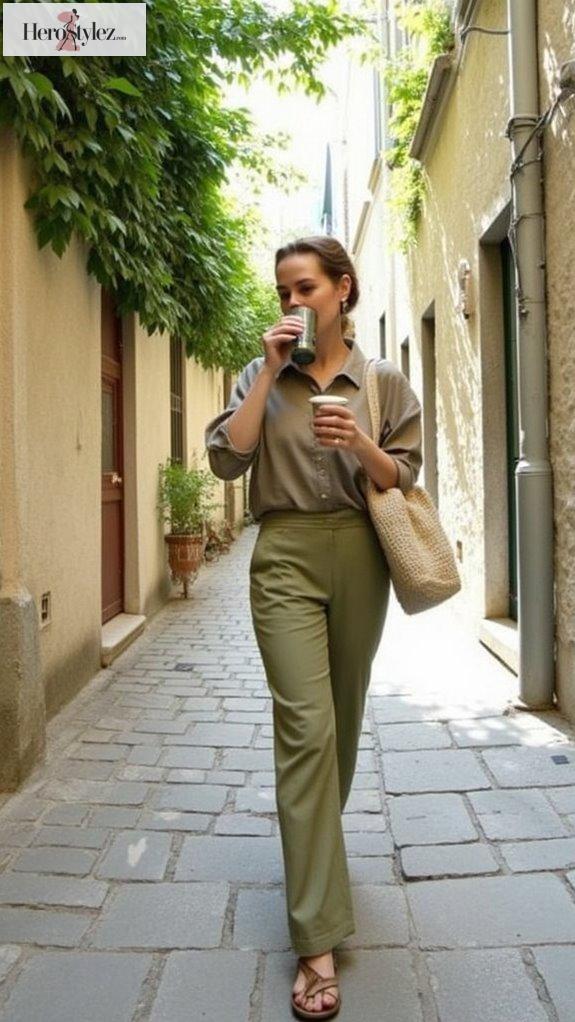
Picture slipping into your favorite pair of vintage jeans, the kind that feels like they were made just for you—comfy, stylish, and oh-so-sustainable!
Guess what? The fashion world is shaking things up by reducing harmful chemicals in textile production.
Governments worldwide are putting strict bans on nasties like azo dyes and heavy metals. You’d be amazed—innovations are popping up like daisies!
Brands are swapping in eco-friendly chemicals that keep performance high while loving our planet. Isn’t it cool to know your stylish choices support a greener lifestyle?
As we shift towards regenerative fashion materials, you’ll find textiles that not only minimize harm but also contribute positively to the environment.
Let’s cheer for a future where sustainability reigns—one fabulous outfit at a time!
The Role of Technology in Eco-Friendly Fashion Materials
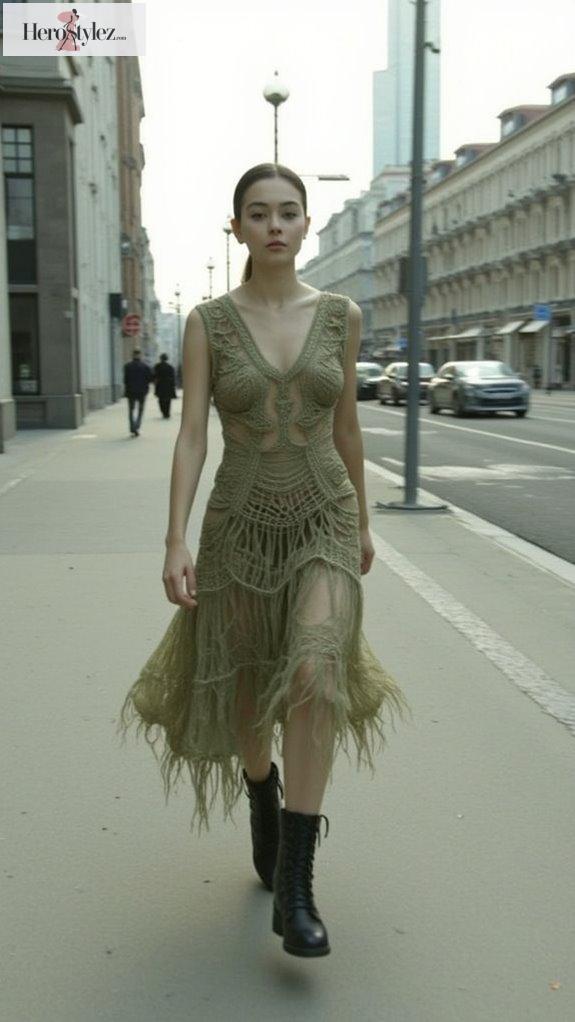
In today’s fashion scene, technology’s shaking things up in the best way possible!
Envision blockchain ensuring your eco-friendly threads are sourced ethically—no shady practices here! With brands like Louis Vuitton riding the tech wave, you can trust those tags.
AI’s got your back too, optimizing designs and cutting waste, while 3D knitting creates custom-fits, leaving zero fabric cut-offs behind—talk about smart!
AI is revolutionizing fashion with smarter designs that minimize waste, while 3D knitting delivers perfectly tailored, zero-waste creations!
And let’s not forget those vibrant, bioengineered textiles made from algae—who knew saving the world could be this fashionable?
It’s all about merging tech with sustainability, and I created Hero Stylez to celebrate this cool revolution!
Sustainable Style for 2025

Sustainable style’s not just a trend—it’s a movement that’s ready to explode by 2025, and you definitely don’t want to miss out!
Imagine this: a closet bursting with organic cotton tees, recycled polyester jackets, and hemp pants that hug your curves perfectly.
With 80% of shoppers willing to splurge on eco-friendly gear, you’ll be riding the wave of the future, and isn’t that thrilling?
Embrace secondhand treasures, rental pieces, and vibrant colors that tell a story, while reducing waste—because who wants a landfill of fast fashion, right?
Join this epic journey; trust me, your wardrobe (and the planet) will thank you!
Dress To Impress
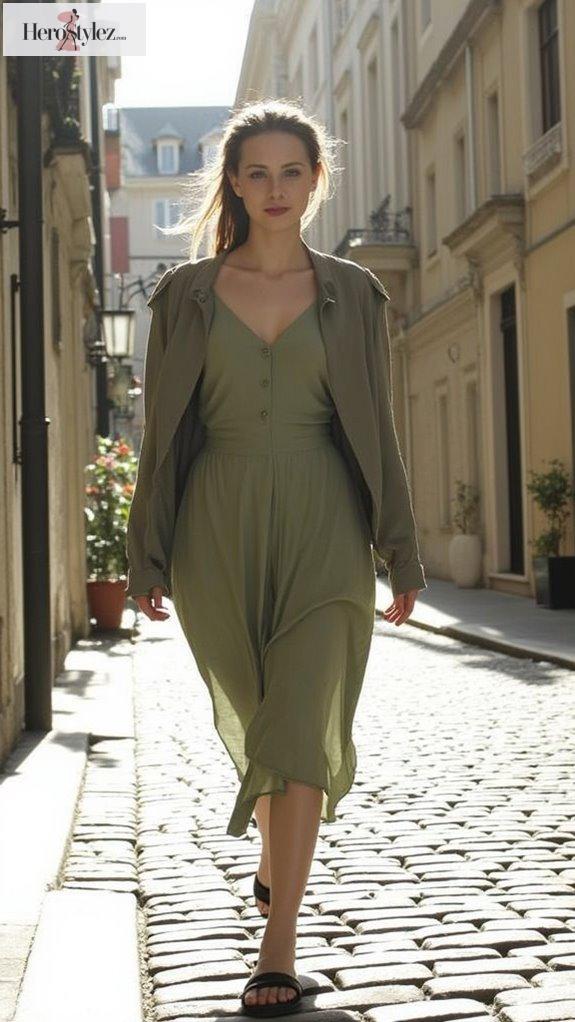
When you want to turn heads without sacrificing the planet, eco-friendly dresses are your go-to!
Envision slipping into a stunning TENCEL™ dress, its silky softness hugging your curves, while you enjoy that breathable comfort all day long.
Or how about a chic Piñatex jacket, giving you that edgy look without the guilt?
These fabrics, like recycled linen, not only keep you cool in style, but also show off your eco-conscious flair.
Trust me, choosing sustainable fashion—it’s not just smart; it’s downright fabulous!
(And yeah, I created Hero Stylez for this very reason: to help you make effortlessly chic, planet-friendly choices!)
Outfit Inspo Eco-Friendly Fashion Materials 2025
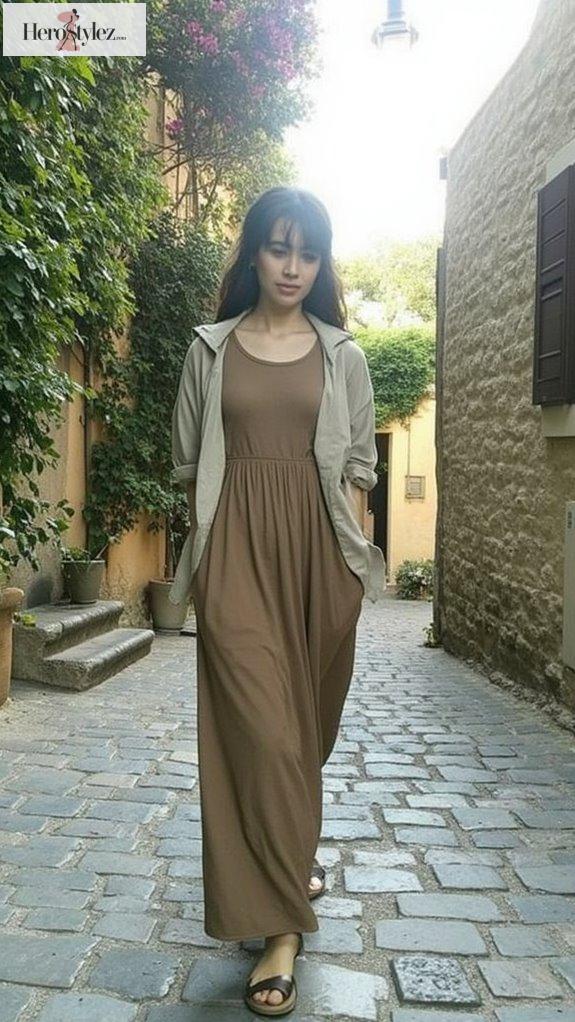
Ready to shake up your closet with some eco-friendly flair? Say goodbye to fast fashion and hello to the sustainable styles that’ll have you looking chic and responsible!
Embrace eco-friendly fashion and swap fast trends for chic, sustainable styles that showcase your values!
Check out these fab staples:
- Hemp fabric oversized jacket: Breathable and super durable for those lazy weekends!
- Organic cotton maxi dress: Soft, stylish, and good for the planet—what’s not to love?
- Recycled polyester activewear: Perfect for those yoga sessions or coffee runs, ’cause who says you can’t look fly while working out?
Let’s make choices that reflect our values—like I do with Hero Stylez. Fashion can be fierce *and* eco-friendly—let’s step it up!
Questions and Answers
What Are the Main Benefits of Organic Fibers in Fashion?
Organic fibers enhance sustainability by reducing chemical use, supporting biodiversity, and decreasing water consumption. They also protect health, lessen allergies, and offer comparable durability. You’ll find them more appealing in an eco-conscious wardrobe.
How Can Consumers Support Sustainable Fashion Initiatives?
You can support sustainable fashion by buying high-quality garments, choosing eco-friendly fabrics, backing ethical brands, participating in resale markets, and demanding transparency in sourcing. Your choices can drive positive change in the fashion industry.
What Certifications Should I Look for in Eco-Friendly Clothing?
When shopping for eco-friendly clothing, look for certifications like GOTS, OCS, and OEKO-TEX. These assure organic fibers, chemical safety, and ethical labor practices, giving you confidence in your sustainable fashion choices.
How Do Fast Fashion Brands Impact Sustainable Fashion Efforts?
Fast fashion brands explode environmental challenges, decimating sustainable fashion efforts. You’re caught in a cycle of overconsumption, where low-cost trends overshadow quality choices. Break free and embrace brands prioritizing sustainability for a brighter, stylish future.
What Trends Are Emerging in Sustainable Fashion Beyond 2025?
You’ll notice growing trends in sustainable fashion, like regenerative materials, circular economy practices, and digital design technologies. These innovations focus on minimizing waste, enhancing durability, and meeting consumer demands for ethical, eco-friendly options in the market.
References
- https://theroundup.org/sustainable-fashion-statistics/
- https://www.genevaenvironmentnetwork.org/resources/updates/sustainable-fashion/
- https://world-collective.com/blog/2025-fashion-statistics-insights-for-strategic-sustainable-and-connected-industry
- https://www.uniformmarket.com/statistics/fast-fashion-statistics
- https://www.sgs.com/en-us/news/2025/07/cc-2025-q2-how-ethical-fashion-is-redefining-the-future-of-style
- https://www.ainvest.com/news/sustainable-fashion-materials-summer-2025-investment-opportunity-natural-fibers-ethical-brands-2506/
- https://www.coherentmarketinsights.com/industry-reports/global-sustainable-fashion-market
- https://hayden-hill.com/blogs/journal/sustainable-fashion-trends-to-watch-in-2025
- https://www.lightspeedhq.com/blog/sustainable-fashion-trends/
- https://us.modalova.com/zine/trends-2025-revolution-of-eco-friendly-innovative-materials/


Leave a Reply